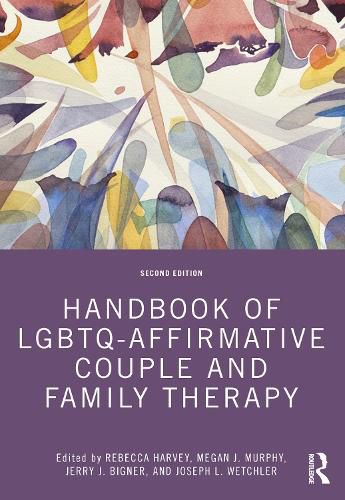Readings Newsletter
Become a Readings Member to make your shopping experience even easier.
Sign in or sign up for free!
You’re not far away from qualifying for FREE standard shipping within Australia
You’ve qualified for FREE standard shipping within Australia
The cart is loading…






This comprehensive second edition inspires therapists to utilize clinical work to pragmatically address intersectional oppressions, lessen the burden of minority stress, and implement effective LGBTQ affirmative therapy.
A unique and important contribution to LGBTQ literature, this handbook includes both new and updated chapters reflecting cutting-edge intersectional themes like race, ethnicity, polyamory, and monosexual normativity. A host of expert contributors outline the best practices in affirmative therapy, inspiring therapists to guide LGBTQ clients into deconstructing the heteronormative power imbalances that undermine LGBTQ relationships and families. There is also an increased focus on clinical application, with fresh vignettes included throughout to highlight effective treatment strategies.
Couple and family therapists and clinicians working with LGBTQ clients, and those interested in implementing affirmative therapy in their practice, will find this updated handbook essential.
$9.00 standard shipping within Australia
FREE standard shipping within Australia for orders over $100.00
Express & International shipping calculated at checkout
This comprehensive second edition inspires therapists to utilize clinical work to pragmatically address intersectional oppressions, lessen the burden of minority stress, and implement effective LGBTQ affirmative therapy.
A unique and important contribution to LGBTQ literature, this handbook includes both new and updated chapters reflecting cutting-edge intersectional themes like race, ethnicity, polyamory, and monosexual normativity. A host of expert contributors outline the best practices in affirmative therapy, inspiring therapists to guide LGBTQ clients into deconstructing the heteronormative power imbalances that undermine LGBTQ relationships and families. There is also an increased focus on clinical application, with fresh vignettes included throughout to highlight effective treatment strategies.
Couple and family therapists and clinicians working with LGBTQ clients, and those interested in implementing affirmative therapy in their practice, will find this updated handbook essential.